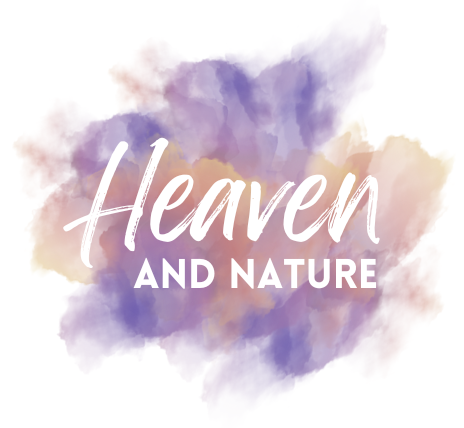For us outdoor lovers, God often speaks to us in and through our adventures and experiences in nature.
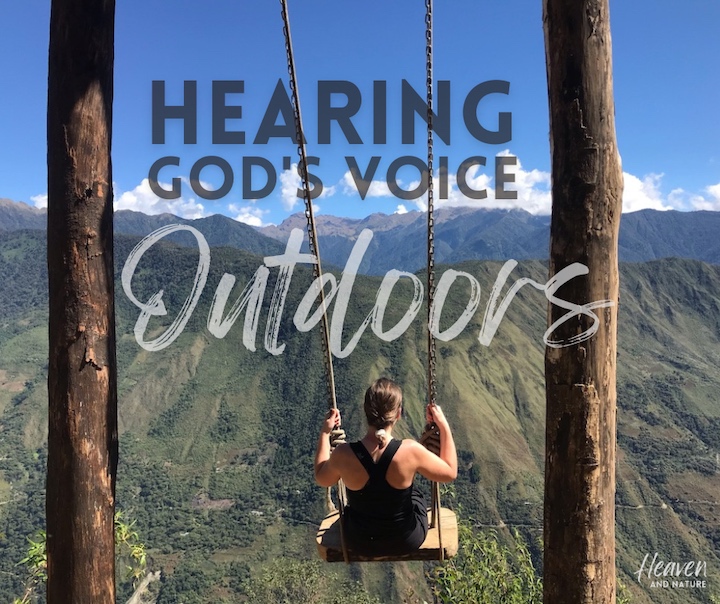
That’s what Emilie O’Connor discovered when she hiked Peru’s Machu Picchu in June 2021. God revived a dream in her heart she had let go dormant.
Of course, Emilie’s entire trip was amazing on many levels. We can all appreciate the unbelievable beauty found in the Andes Mountains, and the joy of adventuring in a new place.
But when we truly hear the Lord speak to us personally during a trip like that, it’s even more special and memorable.
Here’s our interview with Emilie as she shares about her journey to Machu Picchu:
What made you decide on a trek in Peru?
EMILIE: My good friend, Elizabeth, is working as a pre-K teacher in Colombia. She and some of her co-workers were talking about trips in South American that were on their bucket list while they were there. So Elizabeth reached out to me and said, “We’re going to Machu Picchu over summer break and inviting friends. Would you like to come?”
I couldn’t say no! I’m really thankful to have people in my life who encourage me to do things like this.
I like to camp rustic and be where there are as few people as possible. So I was hesitant when I heard my bag would be carried by a porter, and concerned that the trekking company would be fair to its workers.
But I looked at the company, Alpaca Expeditions. It was founded by one of the porters, the wages are fair and they support small female-owned businesses in their country. So I felt much more comfortable going after I did that research.

We went in June, during the dry season. We spent our entire time in very mountainous regions in Peru, so it was very dry. But it’s also very temperate, with very even temperatures. Our first day hiking it snowed on us, and that night was very cold. But most days it was in the 60s.
I hadn’t really ever thought of going to Machu Picchu. I knew it was a historical site, but didn’t know how beautiful the surrounding mountains were and how much nature you can access in that part of Peru. In my mind I had filed it away in the list of crowded historical sites where you don’t get to do much hiking.
But you can hike all around it, and a lot of these trails are the original Incan trails created thousands of years ago. The same trail the Incans used to flee from the Spaniards all those years ago.
Our guide was super knowledgeable about the various local people groups that have lived in the area, all the way back to the Incan people. He taught us about their messaging system, how they would run for days to deliver their messages—kind of like the pony express here, only on foot. We were on the same trails they used.
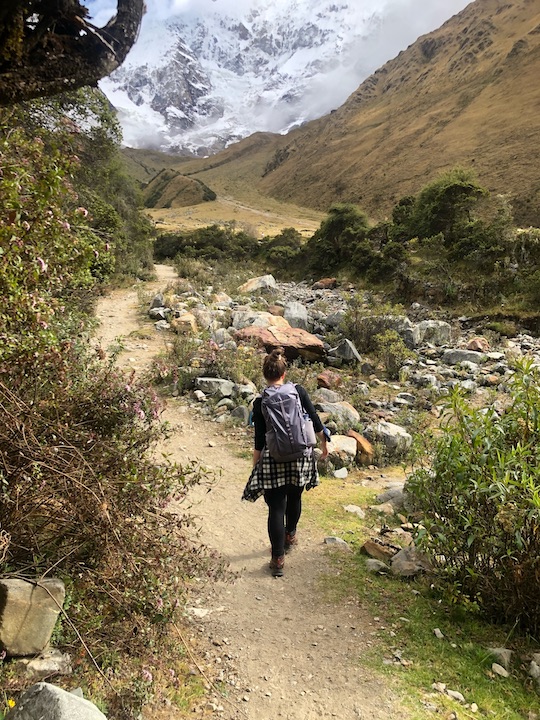
When you descend it’s called a cloud forest. Like a rain forest but everything’s smaller. Gorgeous flowers and really beautiful colors, amazing trees and waterfalls. It wasn’t hiking through boulder fields the whole time.
But we also got to experience 15,000 feet with snow peaks on either side, going through this pass and seeing a glacier. It was a really cool dynamic of all these different kinds of scenery converging. It’s an amazing place.
How long was your trip?
EMILIE: Our trip was 10 days total, including the travel days. The trek itself was four days, ending at Machu Picchu with Alpaca Expeditions. Then we went a fifth day with a different outfitter to Rainbow Mountain, a couple hour bus ride from our last night’s hotel.
There were six of us on the trip, plus our lead guide, Lizandro, Armando the chef, his assistant and two muleteers. So 11 total at camp each night—a good-sized group. Our tour group was all Americans, three who are living in Colombia and three of us came from the US.
Because of Covid, this was Lizandro’s first group in 18 months. So it wasn’t as busy as in normal years.
What were your highlights of your Machu Picchu trek?
EMILIE: It was the hardest thing I’ve ever done physically, to date! We hiked a 15,000-foot pass, Salkantay Pass. That was a highlight even though I felt like I was dying! High elevation, and absolutely stunning.

You’re in pretty high elevation already in the Andean Mountains, so you get to snow caps and above the tree line pretty quickly.
Before we went up through the pass we went to Humantay Lagoon, a glacier-fed lake. It’s just beautiful! Our campsite on the first night was in a valley surrounded by snow-capped mountains. It was gorgeous.

Seeing Machu Picchu itself—it’s an amazing historical landmark to get to learn about. Knowing human beings built those structures—and it’s much bigger than pictures show. The pictures can only show part of it.
I have really good memories of hiking between these mountains. I was thinking, “I’m actually, physically here. I’m not looking at a National Geographic picture of this—I’m actually here!” It was really, really beautiful.
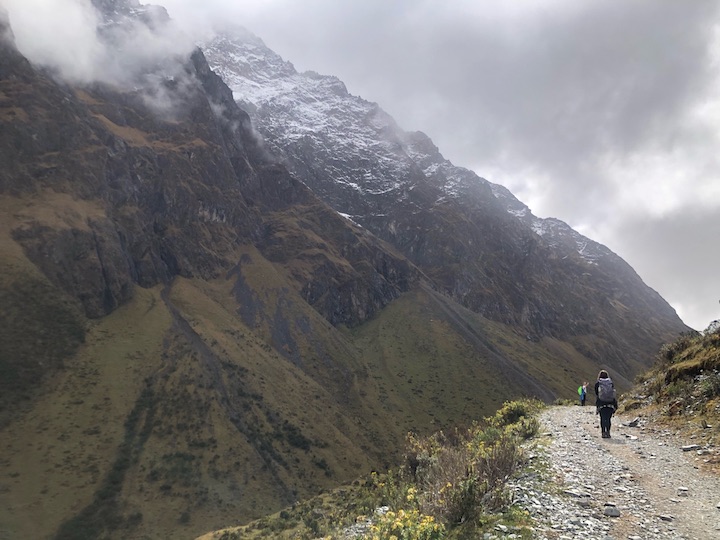
The places you stay along the line are very different. Our first night we stayed in tents in a valley. But there’s running water, a kitchen house, flush toilets. It felt like luxury in the wilderness! I’m not used to that. It felt a little weird!
Our second night was at these “hobbit houses” as they call them. Small stone houses with round doors and a couple windows. We slept in a bed with a mattress, and got to take a hot shower and hot tub, which I was very thankful for.
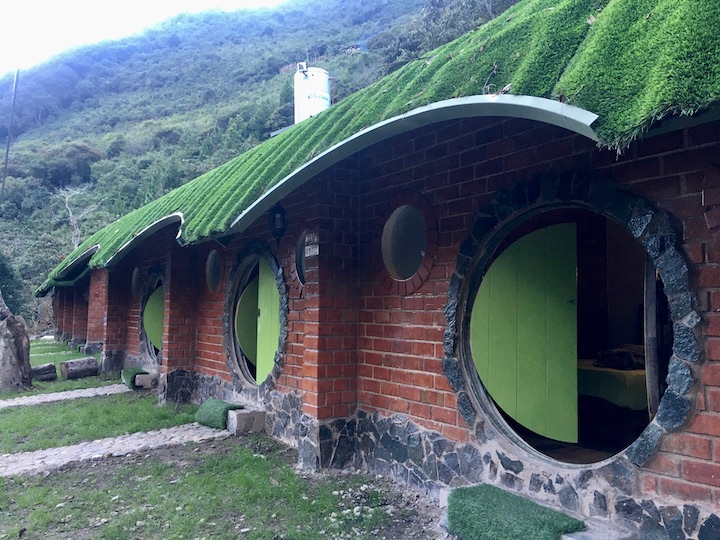
Our third night was in a hotel in a town. It was part of our package, as well as dinner.
On one of our days we got to tour a coffee farm. We met the farmer, see about the process step-by-step, see beans freshly harvested, saw how they’re dried. We got to use the grinding machine and had a chance to buy her coffee.
It exemplified the need for fair trade. These coffee farmers are in super remote areas and could easily be taken advantage of. I cared about Fair Trade in the coffee industry before this, but putting a face to it made me want it even more. It’s a lot of hard work in very mountainous terrain.

For those who want to see Machu Picchu but don’t want to or can’t do the trek, you can also take the train there. It’s a beautiful way to get there, too. They’ve made it accessible.
Tell us about Rainbow Mountain
EMILIE: Rainbow Mountain is a little over 17,000 feet. Because I struggled so much on our first day at 15,000 feet I took altitude medicine for that one.
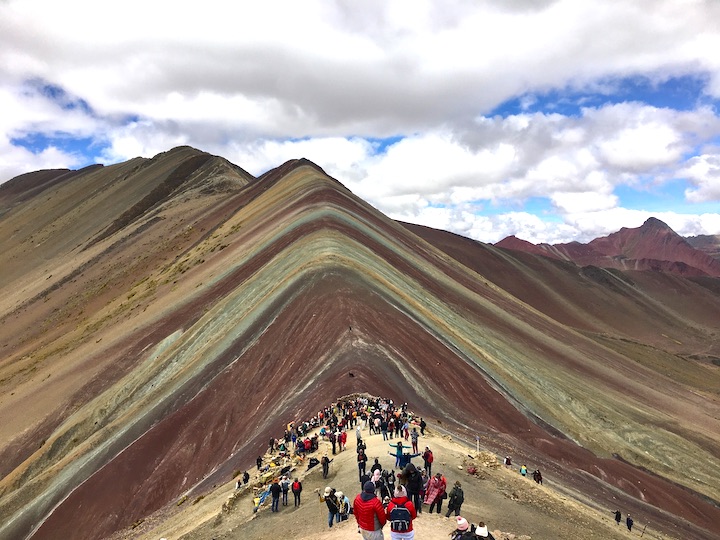
Even though Rainbow Mountain is much higher in elevation, we did much less hiking to get to it. I think it’s designed to be more accessible to more people. Our hike was only and hour-and-a half-up, whereas our hike to the 15K was 4-6 hours.
I felt like I had more time to take breaks here, and go at a leisurely pace. On the Machu Picchu trek we had much more intense mileage we had to reach every day, plus the altitude and elevation gain.
I think a lot of the pictures of Rainbow Mountain are highly edited! It didn’t decrease my awe and wonder at it. But if you’re going there thinking it looks like candy, you have to realize rocks are rocks. People can Photoshop it to be a lot brighter than it actually is!
The colors in the mountain are because of mineral deposits. Even hiking up you can see pebbles with the same colors, too. It’s totally natural, but doesn’t look natural.
Why are you glad you did this trip, besides the location?
EMILIE: This was my first time traveling internationally for fun. And this was the most international travel I’ve done by myself, getting to Peru to meet up with the others in my group. So it increased my confidence in traveling abroad.
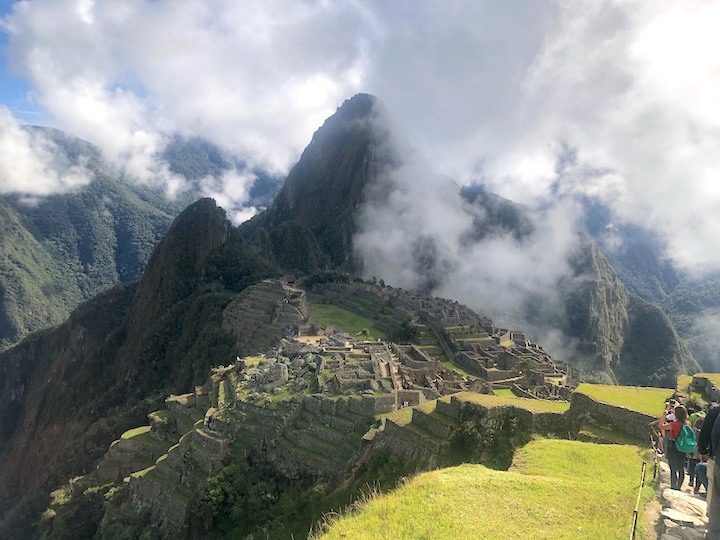
It really made me want to pursue learning a second language, potentially Spanish. I’ve heard this quote that learning a second language is one of the only skills that’s worth doing poorly. Any extra work you do is going to help you relate more to the people around you.
I really enjoyed meeting the locals and getting to know our team, especially Lizandro. We felt like we were friends with them.
Most of our team was Quechuan, descendants of the Incan people. Most that live and work along the trail are Quechuan. We got to learn more words in Spanish and some words in Quechuan.
I would go back and do the exact same trek over again! You take in as much as you can, but you know you’re missing stuff. It was rich enough that to hike the same trails would still feel like a new experience.
Did you learn anything new about community life?
EMILIE: It was fun starting out as strangers, and then by the end we felt really close. Sometimes with personalities it doesn’t always go well. But this was a good mix of people and we enjoyed getting to know each other.
This was funny—on our second day I got bit in the lip by a bug. My lip swelled up huge! That was one of the things we just started laughing about. No one could look at me without laughing!

I learned from that that there’s a certain level of humility not to be self-conscious about it or offended…choosing to be vulnerable. From that we were able to laugh about other things and build inside jokes. So that humility and vulnerability helps build community.
I’ve lived in community for five years now, so I was very comfortable traveling with a group like that. It didn’t weird me out! It wasn’t a big deal.
How did God speak to you through your trip?
EMILIE: I feel like I really encountered God on the trip. Being in nature is one of the places where I can most talk to God. So many of the daily expectations of life are stripped away.
When I’m hiking I think about God more because I’m seeing so many beautiful things, thanking God for this part of Creation I hadn’t gotten to see yet.
This trip made me feel more alive. I connected with the people on my team and with the people in the country around me.
It reminded me that I went to nursing school to be an international nurse. I really enjoyed being in another culture because God reminded me of my dreams of living a life where I’m interacting with other cultures. At some point I think it’d be really wonderful to move to another country. I enjoyed being in Peru so much I could see moving to a South American country.
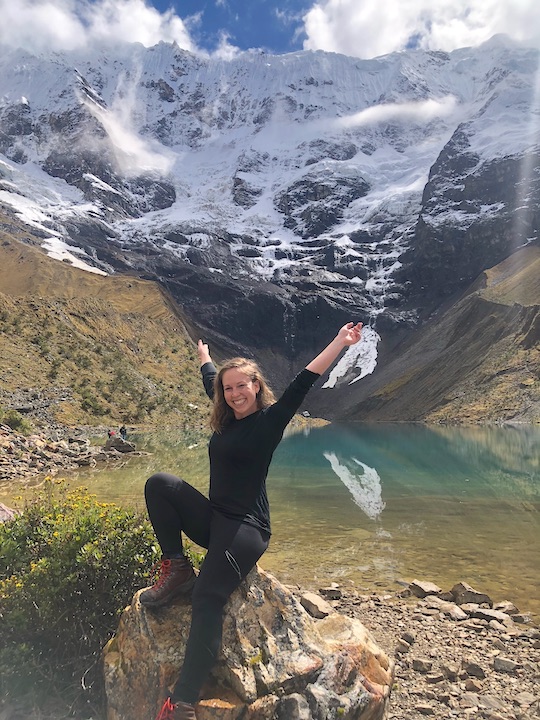
At dinner one night we got to meet a group at the table next to us. They were from Doctors Without Borders. That was the organization that originally inspired me to become a nurse. I saw an advertisement in a magazine that struck me. I went and looked up the jobs you could do with them and nursing is one of them.
That’s where the whole “Emilie as a nurse” thing started. So God reminded me of that and challenged me that He wants to be a part of my dreams. And He’s big enough that if I dream something that isn’t actually the best for me, He’s not going to give me something that’s not good for me. He’s big enough to let me be in the process, and also sovereign enough to lead me in the right direction.
Being there helped me realize I had things I want to do in my life that I had been shutting down. It felt like if I failed at them or if God said no to me, it would hurt too much.
Especially seeing Elizabeth living and thriving in that culture, watching her speak Spanish—I realized it was something I could do. I could learn another language, move to another country and thrive there. I thought, “Wow, I could do this.”
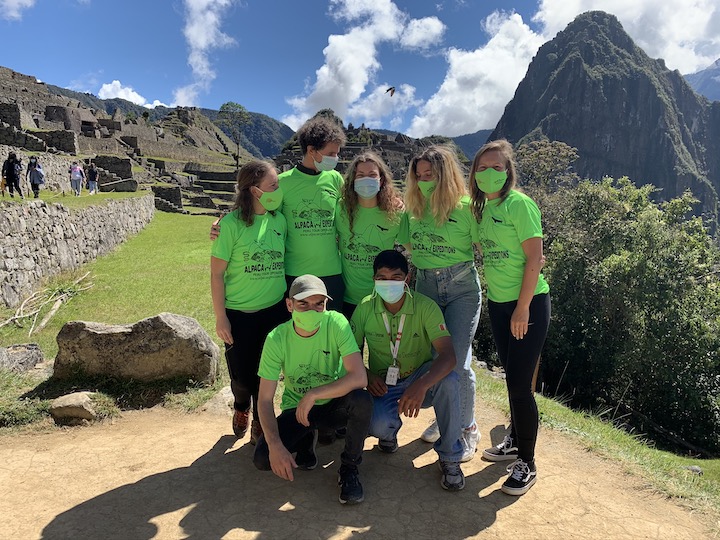
(All photos courtesy of Emilie O’Connor)
Emilie is one of the writers of Heaven and Nature Sing: 365 Devotionals for Outdoor and Nature Lovers
Here’s more…
- How God Uses Wilderness to Shape Us
- As Christians, How do We Steward our Environment Well?
- The Many Benefits of Nature
- 11 Wonderful Things in Our Natural World - February 6, 2025
- What Kind of Exercise Is Best? - January 10, 2025
- 116 Verses in the Bible that Talk About Light - December 10, 2024
